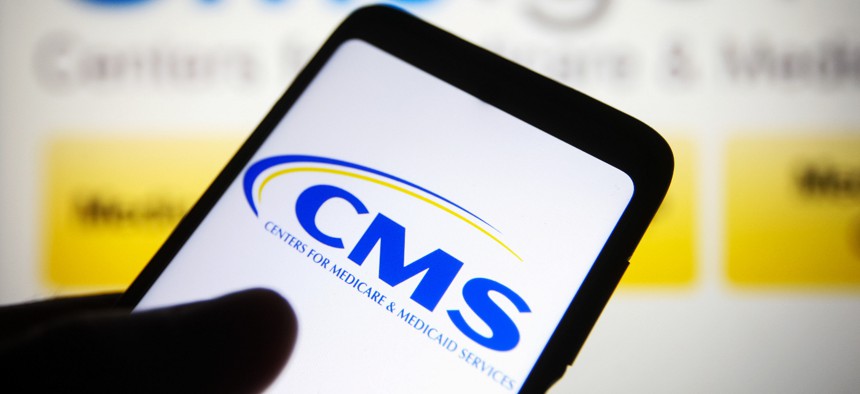CMS findings identify barriers to effective healthcare

Pavlo Gonchar/SOPA Images/LightRocket via Getty Images
COMMENTARY | Many of these issues are multifaceted and complex to address, and they would require collaboration between public and private sectors.
Last fall, when the Center for Medicare and Medicaid Services sent out a request for public opinion with a request for information titled Make Your Voice Heard, it sought to receive input on the challenges and struggles related to accessing healthcare.
The comment period was open for a period of 60 days, and in that time over 4,000 responses were collected in four different areas: accessing healthcare and related challenges; understanding provider experiences; advancing health equity; and the impact of waivers and flexibilities provided in response to the COVID-19 public health emergency.
After collecting and analyzing the comments, trends began to emerge pertaining to advancing health equity and reducing provider burden. Some of the many challenges identified include limited availability of digital health services, workforce fatigue, inefficient record-keeping systems, lack of data collection standards, and the need to address bias in health technology development.
Many of these issues are multifaceted and complex to address, and they would require collaboration between public and private sectors to set forth strategies, change existing processes, utilize modern technologies and form new habits. Today, there are abundant opportunities for modern healthcare data management — or HCDM — systems to play a role in addressing these issues to help move the needle.
Reduce workforce burden
As identified in the CMS RFI, healthcare workers and providers are often weighed down by administrative tasks which can remove focus from patient care. HCDM systems can reduce the effort required to chase down information with secure, accessible, accurate and insightful data.
When organizations are unable to easily exchange information, this creates barriers to data sharing which causes providers to spend unnecessary time and resources on administrative tasks. If modern IT infrastructure was used to accelerate such processes, staff would have additional time to dedicate to patient care and service. This is one example of why interoperability, or the lack thereof, plays a key role in the healthcare industry.
First, for interoperability to work, privacy concerns and access controls must be addressed to ensure patient information is kept secure and confidential. Once data files are sharable, it is possible for critical information to flow seamlessly between organizations. Quick, accurate and secure data sharing is imperative for healthcare providers and enables providers to spend more time on patients.
The industry is also likely to experience improvements to administrative burden with an increase in the adoption of artificial intelligence and automation in the coming years. There are many ways automation will reduce cost and increase efficiency. For example, it can expedite data entry, allowing for paperless documentation and the automatic processing of electronic health records. Not only would those upgrades reduce strain on the healthcare workforce, but also address another key CMS finding — inefficient record keeping systems.
Managing data
Data is a crucial asset to the healthcare industry for delivering quality care and improving health outcomes, but inefficient record keeping systems and a lack of data collection standards can significantly hinder the quality of care delivered.
With proper HCDM services in place, the public and private health sectors can continue to use data to close care gaps in the healthcare industry. When data is managed optimally, it can be analyzed to identify and serve the most vulnerable populations. However, data collection practices must be comprehensive and unbiased to generate useful insights. Otherwise, the outcomes will not be entirely accurate or representative of the selected population.
There are certain areas driving disparities. By utilizing data insights, it’s possible to implement more targeted solutions with focused attention on specific locations experiencing adverse health trends.
The implementation of data analytics tools enables the identification of healthcare organizations with highly vulnerable populations. Additionally, this ensures they are functioning at optimal administrative rates and can apply key performance indicators to observe trends and behaviors. Healthcare data analysis can also enable providers to better understand the factors that contribute to health disparities and inequity.
An equal future
Many of the comments received from the RFI were related to health equity, with an expressed need to improve health disparities and a call for the inclusion of social determinants of health practices, as well as addressing bias in health technology development.
For providers to support healthy communities in disadvantaged areas or for minority populations, they must confront social disparities by developing data standards and accountability procedures. Doing so will help ensure all initiatives or policy updates are data-driven, well-informed and effective.
HCDM platforms and analytical tools, in conjunction with increased adoption of artificial intelligence and automation, can improve efficiency and reduce administrative burdens on healthcare providers. This will result in improved patient care, as well as a reduction in health disparities to support healthy communities in disadvantaged or rural populations.
By embracing innovative technologies and data-driven practices, the healthcare industry can deliver higher quality care, improve health outcomes, and advance health equity for all.


